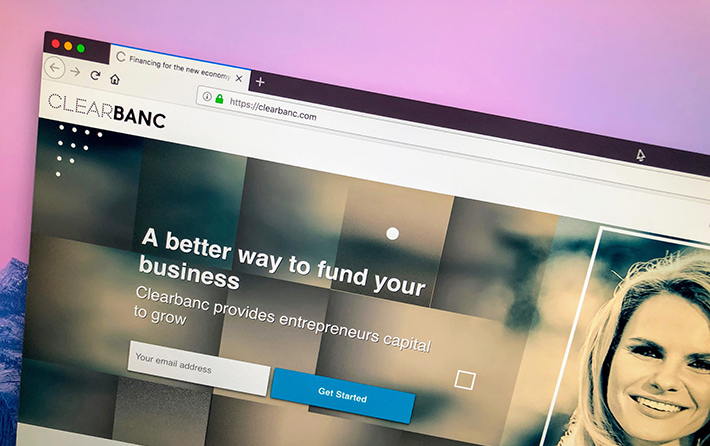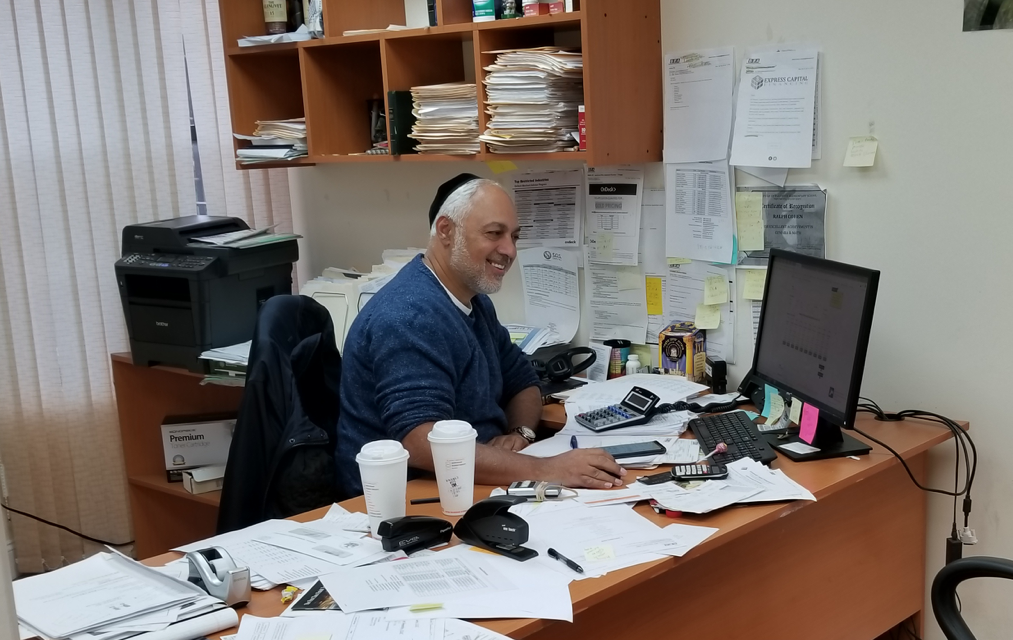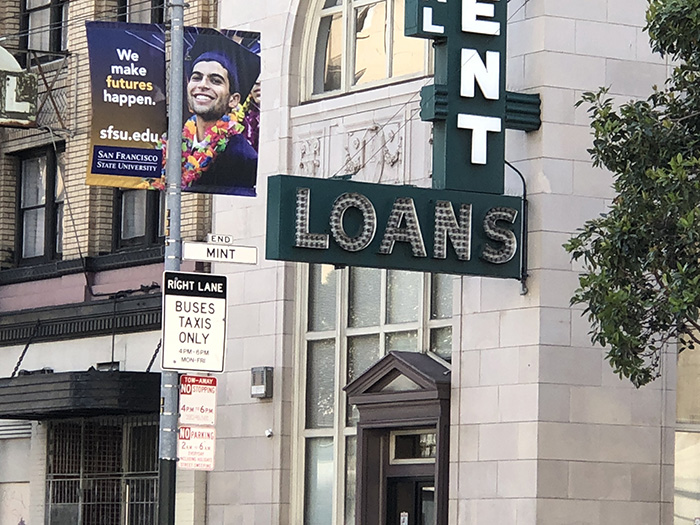Study Shows Small Business Loan Demand Highest Since 2012
November 26, 2018 A study released today reveals that American small businesses are eager to take business loans, with 48% planning to take out a loan in the next year, the highest level of demand since 2012. The study, called “Gimme Credit: Faster, Simpler, Safer Credit Main Street America,” was conducted by PayNet, which provides small business credit data, and Raddon, a research provider to financial institutions.
A study released today reveals that American small businesses are eager to take business loans, with 48% planning to take out a loan in the next year, the highest level of demand since 2012. The study, called “Gimme Credit: Faster, Simpler, Safer Credit Main Street America,” was conducted by PayNet, which provides small business credit data, and Raddon, a research provider to financial institutions.
According to the study, almost 65% of small businesses anticipate an increase in sales, the highest percentage in over 14 years. And 43% of small businesses have overall confidence in the economy.
“Small businesses are in full-on growth mode,” said PayNet President William Phelan. “They’re looking to banking partners for reasonable capital infusions, but are discouraged by slow reviews, impersonal processes and denials. This creates a huge opportunity for nimble community banks, credit unions, and alternative lenders to fill the void.”
Already, some larger banks like Chase and PNC have partnered with OnDeck’s ODX to enhance speed and fill this void.
Still, small business loan demand is often met with uncertainty from banks that remain wary of lending to small businesses in the wake of the financial crisis, according to the study. But Bill Handel, Chief Economist at Raddon, believes that lenders can change their ways, while still being fiscally responsible.
“It’s a recurring cycle,” Handel said. “Cumbersome underwriting practices increase the likelihood that lenders are either unwilling or unable to extend favorable terms to small businesses, which in turn discourages applications. Fortunately, lenders can take steps to improve their efficiency and profitability in this area.”
What are some of these steps? The study recommends the following:
- Segment applications by loan request size and reviews by loan risk profile.
- Deploy technology to assist in preparing applications, collecting data, and analyzing the business/loan.
- Optimize procedures by leveraging industry intelligence to improve their “decision engines.”
Elevate Funding Strengthens Compliance and Monitor Abilities
November 21, 2018Yesterday, Elevate Funding announced that it would be using the PerformLine Platform to enhance its compliance and email monitoring abilities.
“Terminology is very important in this industry,” said Elevate Funding CEO Heather Francis.
Francis said that much of Elevate’s decision to use PerformLine is to make sure that the correct terms are being used so that the company is consistent in how it presents its MCA product, both to merchants and to referral partners.
“We’ve always been very in tuned to our image, both with our referral partners and with our merchants, and we like to make sure it’s a consistent image,” Francis said.
Together with PerformLine, Elevate Funding created a list of 500 problematic words or phrases. If these terms are used in an email – written by an Elevate Funding employee, a merchant or a referral partner – the email will get flagged and brought to the attention of Francis. Some red flag key terms include “loan,” “term,” “payback” and “free.” Regardless of who wrote the word, the Elevate Funding employee will be asked to send a clarifying follow-up email.
For example, Francis said that if a merchant sends an email that reads “What is my loan balance?” this email would be flagged and the company employee would respond, clarifying that the MCA deal is not a loan. In addition to being clear with customers and referral partners, the PerformLine service is beneficial for compliance reasons.
“In today’s regulatory environment, Elevate must stay on top of its compliance procedures not only to satisfy industry requirements but to ensure the security of sensitive data,” Francis said. “This includes all levels of interactions with our referral partners and the small business owners we service. PerformLine has provided the opportunity to review this information with speed and accuracy, so our compliance team can address any issues as they occur.”
Other funders, like GreenBox Capital, have employed monitoring capabilities not just to protect themselves from legal liability, but to protect merchant data.
Based in Gainesville, FL, Elevate Funding employs about 20 people.
Selling a Home, Selling Commercial Financing – What’s the Difference?
November 16, 2018 Alternative funding brokers come from all different backgrounds, but for many them, being a broker is not their first job in sales. Some sold equipment, some sold cars and others sold homes. They were realtors. deBanked found two alternative funding brokers with a background in residential real estate and we asked them to compare the similarities and differences between selling a home and selling money.
Alternative funding brokers come from all different backgrounds, but for many them, being a broker is not their first job in sales. Some sold equipment, some sold cars and others sold homes. They were realtors. deBanked found two alternative funding brokers with a background in residential real estate and we asked them to compare the similarities and differences between selling a home and selling money.
Alex Alpert is the owner and CEO of Philadelphia-based Solomon Commercial Lending, which provides clients with a wide variety of funding from SBA loans, equipment leasing, factoring and some MCA. Before starting his company, he had worked as a residential realtor for about five years. When asked about his approach to selling a home versus selling money, he sees them as very different.
“When I consider non-investment home ownership, it is 100% emotional,” Alpert said. “If you think about it, the most expensive and most intimate and emotional purchase that you’re ever going to make is going to be your home. As people, we pour ourselves into our homes. Our homes speak so much about our personalities – what we like, what we don’t. It’s literally like a biography [of someone.]”
Alpert spoke about the intangibles involved in residential real estate, how a lot of it is about the feel of a home, which is highly subjective.
“Instead of you manipulating what they want, it’s just guiding them to reach that ‘ah-ha’ moment,” Alpert said. “I didn’t walk around the house with them and say ‘This is the bedroom and this is the bathroom.’ I would stay back and just say ‘Take a walk around, see how it fits, jump in the bed if you want to, and see how you feel.’ And when they came back down, one of my common first questions would be, ‘Can you picture yourself living here?’ Because that question makes you visualize yourself waking up there. If you can pick up on what the person is showing at that moment, you can guide them better…I think I’m successful because I’m honest, I’m transparent, and I will tell you things you won’t expect. And at the end of the day, that’s how you build referrals and address the needs of an emotional transaction.”
On the other hand, Alpert sees non-primary home deals as more transactional.
“When it comes to business, it’s much less personal,” Alpert said. “People will certainly do their research on who they engage with. Most all of my business comes from referrals. But still, you don’t know me from Adam, and you’re sending me over everything…With [business transactions,] it’s based on need and your ability to serve that need. The emotional part, just from the start, is not that present. It’s a need and solution type of approach.”
Alpert will work with clients with tens of millions of dollars in revenue. But he acknowledged that for some of his smaller “mom and pop shop” clients, transactions can be emotional, like with a small town dance studio client he is helping to secure a 7(a) SBA loan for.
James Celifarco, President of Horizon Financial Group in Brooklyn, which offers mostly small business loans and MCA, currently works as a realtor as well. He doesn’t see much of a difference in the way he approaches residential real estate clients versus small business merchants.
“I think they’re very similar in that if [people] are buying or selling a home, it’s their most coveted possession,” Celifarco said. “It’s what they’ve worked the hardest to obtain. It’s their biggest asset. And it’s the same thing when dealing with a business owner. Business owners are probably more passionate than a homeowner. Either way, if you’re dealing with a business owner or a homeowner, it’s their prized possession.”
While not using the word “emotional,” Celifarco seemed to suggest that non-residential real estate deals are just as emotional.
“[For both homeowners and business owners,] you really have to deal with kid gloves in that they play very close to the vest,” Celifarco said. “You have to have a certain approach where they feel comfortable speaking with you about their home and their finances or their business and their finances. They want to know that their information is protected.”
Celebrity residential real estate agent Ryan Serhant, who spoke at Broker Fair 2018, said that he lives be three rules to successful in real estate: Follow up, Follow through and Follow back. The last refers to following back a client on social media. This part might not always apply, but Celifarco said that the same persistence is required regardless of the sales client.
“It’s all sales,” he said. “You eat what you kill. You close a deal, you make money. You sell a house, you make money. If you don’t, if you’re not reaching out to your clients, you’re not going to make any money. It’s the same in that you get paid for how hard you work.”
IOU Continues to Post Positive Earnings
November 14, 2018
Loan originations for IOU Financial’s third quarter were $36.1 million, an 85% increase over last year’s Q3 originations of $19.6 million. This is also IOU’s fourth consecutive quarter with positive earnings.
“IOU continued to deliver strong loan origination growth and earnings performance during the third quarter of 2018 and we have successfully managed loan defaults as a result of measures implemented last year,” said IOU Financial CEO Phil Marleau.
The measures implemented last year refer, in part, to changes in collection efforts, such as using a more aggressive litigation strategy against businesses that default on their loan obligations, Marleau told deBanked. Provisions for loan losses in Q3 were $1.2 million, a decrease of 51% compared to last year at this time.
Most of IOU’s revenue comes from making loans of up to $300,000 to American small businesses. Marleau said the average IOU loan is for $100,000 with a 12 month term, although they do offer terms up to 18 months. A significant percentage of IOU’s merchants use the business loans to purchase equipment. Other loans are used for business expansion and temporary cash flow. To date, IOU has originated nearly $600 million in loans.
Despite the fact that the lender mostly services the American market, with its headquarters in Montreal and its stock listed on the Toronto Stock Exchange, IOU made a marketing push this quarter to expand its service in Canada.
“We’ve been getting the word out to brokers that we’re looking to serve Canadian merchants,” Marleau said.
Ironically, in many cases, that has meant telling American ISOs who market to Canada that IOU is open for business in its own country.
Marleau, who is Canadian, met cofounder and IOU President Robert Gloer at a fintech conference in San Francisco, and the company’s first loan was made in 2009. Gloer had ties to Atlanta, which is why IOU’s U.S. office is located there. While the company’s headquarters is in Montreal, the Atlanta office is larger and is where the company’s sales operations take place. The company has about 40 employees, but only about ten work at the Montreal headquarters.
Clearbanc Swaps VC Investing for MCA
November 13, 2018 The business model for many startups is that the business won’t even be close to profitable for years until it gets enough clients or users. But this isn’t the case for all startups. Some of them actually generate considerable revenue after just months. For companies like these, that also need capital for marketing or expansion, Clearbanc is interested to work with them.
The business model for many startups is that the business won’t even be close to profitable for years until it gets enough clients or users. But this isn’t the case for all startups. Some of them actually generate considerable revenue after just months. For companies like these, that also need capital for marketing or expansion, Clearbanc is interested to work with them.
Founded as a venture capital firm by serial entrepreneurs Andrew D’Souza and Michele Romanow, among others, the company now primarily offers merchant cash advances. Instead of analyzing the company’s founders, they are looking at tangibles like revenue and percentage growth.
“We pay a lot of attention to our underwriting and decision-making process because if we make a mistake, we can lose a lot of money,” D’Souza, who is CEO, told Techcrunch yesterday. “Unlike a VC, we don’t expect the majority of our companies to fail and have the winners make up for the losses.”
Clearbanc offers cash advances to new businesses in the U.S. and Canada, from $5,000 to $10 million. At this point, Clearbanc only funds eCommerce and Consumer SaaS (software as a service) companies. Also, eligible companies must be incorporated, have a monthly average revenue of at least $10,000 and have at least six months of consistent revenue history.
So far, Clearbanc has funded $100 million to 500 companies in 2018. Founded in 2015, the company is based in Toronto, Canada.
The Broker: How Industry Veteran Joe Cohen Closes Deals and Dodges Backdooring
November 11, 2018Role: I’m the manager of Business Finance Advance in Brooklyn. I manage a team of about 20.
Years in the business: Since the beginning. 2005/2006.
 How he closes a deal:
How he closes a deal:
You have to really know the customer. You have to have a feel for what his needs are. Is his hot button the amount of money? Is it the term? Is it the rate? Is it all of the above? You have to know what the customer is looking for and try to hit a bullseye…I make sure that I know exactly what the customer wants before I make an offer.
What were your first deals like?
In those days, when we first started doing it, the hard part was just convincing the client that we were for real – actually willing to give him money – and not some fraudster trying to get a hold of his bank statements. And it was only based on credit card revenues at the time. We used to call them up, “Hi, Mr. Smith, do you accept credit cards?” “No.” We’d hang up the phone [because] we couldn’t do anything. There was no ACH program in those days.
Once we got the statements back, we’d just have to figure out how much we could give him based on his credit card sales…We never knew what a decline was in the early days. Everybody that sent in paperwork was approved, it was just a matter of how much money he was going to get approved for.
Biggest challenge as a broker:
The most challenging part of my job is the silent thief. When we send out deals to funders, not only do we have to worry about closing the deal…but when we send a file to some of the funders, either there’s someone at the funder that’s backdooring the deal or there’s a whole syndicate taking the deal and calling the merchant behind our back. That is the biggest challenge to [brokering] today…You’re going to make some deals and you’re going to lose some, but the biggest issue we have is the drama that’s been set up by the backdoor channels that are rampant throughout the industry.
Advice for newcomers:
You have to [understand] that it will take you a year, at least, before you start making any money because a) there’s a lot of people doing it, and b) you have a lot of [backdooring] and if you don’t understand the business, you’re going to get caught up with the wrong funders.
What are some funders you work with, who you trust?
Quarterspot. And CAN Capital and OnDeck. These are the ones that will not backdoor us.
What do you look for in a good broker?
A guy that basically is hardworking and tenacious. You can’t give up. It’s not an easy business. You’ve got to work very, very hard and you have to deal with the successes and compartmentalize the losses.
SoFi CEO Ponders Opening Physical Locations
November 5, 2018 At Money 20/20 a few weeks ago, SoFi CEO Anthony Noto said that eventually the online lender will need to open some physical locations, not unlike ATM machines, for people who get paid in cash.
At Money 20/20 a few weeks ago, SoFi CEO Anthony Noto said that eventually the online lender will need to open some physical locations, not unlike ATM machines, for people who get paid in cash.
The notion of an online lender opening up physical locations sounds ironic. But it would not be the first time a company that started by providing an online solution then opened up physical locations. Amazon’s book stores, which first opened in New York in 2017, is a prime example. The e-commerce giant, which started as a uniquely online-only company, now has more than a dozen book stores. Similarly, Bonobos, which started as an online-only men’s clothing solution – that simplified shopping by avoiding physical stores – now has over 50 brick and mortar locations.
“A few years ago, being online and having a fast-growing Instagram was enough to drive market share away from main street and into our e-commerce stores,” according to a Forbes post this year, “but the amount of brands selling online is reaching such a high number that getting noticed is becoming harder and harder.”
While retail and lending are different businesses, the idea of getting noticed could apply to both.
With the increasing popularity of e-commerce and digital solutions to everything, including banking and lending, some have said that brick and mortar banking is on its way out. But data contradicts this. According to an American Banker story from March of this year, JPMorgan Chase said it intends to open as many as 400 new branches in Boston, Philadelphia and Washington, D.C. And Bank of America announced plans to add about 500 branches. On the other hand, according to the story, Wells Fargo closed 214 bank branches in 2017 and said it plans to close more than 1,000 by 2020.
But a survey released this year by J.D. Power, a research company, found that most customers prefer to open accounts and get financial advice in person.
The ultimate brick and mortar location in the world of lending is the payday lending store, which serves – or targets – the low end of the consumer market living paycheck to paycheck. Still, that is industry is alive and well, with about 12 million American taking out loans at physical stores like these, according to Finder.com. And online lenders like Elevate are actively trying to poach customers of these stores.
Lending professionals are using of brick and mortar spaces creatively these days. Brother James and John Celifarco recently moved their ISO shop to a storefront in Brooklyn, and many of their clients are neighboring small businesses.
“Obviously you can’t build an entire business on just these two streets,” John said, “but it’s extra business that we wouldn’t have had if we weren’t here.”
Elevate Tests ‘Geofencing’ to Lure Customers Away from Competition
November 1, 2018 During a session at Money 20/20 last week, Elevate CEO Ken Rees mentioned a fairly new marketing technique they have been testing called geofencing. According to a story in CIO, a trade publication for Chief Information / Chief Technology Officers, geofencing is “a service [using GPS technology] that triggers an action when a device enters a set location.” For Elevate, these set locations are payday loan stores and the idea is for the company to detect and then market to prospective customers who may have recently visited a payday loan store. People visiting such stores would likely be good candidates for Elevate’s Rise product.
During a session at Money 20/20 last week, Elevate CEO Ken Rees mentioned a fairly new marketing technique they have been testing called geofencing. According to a story in CIO, a trade publication for Chief Information / Chief Technology Officers, geofencing is “a service [using GPS technology] that triggers an action when a device enters a set location.” For Elevate, these set locations are payday loan stores and the idea is for the company to detect and then market to prospective customers who may have recently visited a payday loan store. People visiting such stores would likely be good candidates for Elevate’s Rise product.
“It can’t be a completely [random person,]” Elevate’s COO Jason Harvison told deBanked. He explained that the prospective customer had to have somehow engaged previously with Elevate, which could mean that they visited Elevate’s website.
Daniel Rhea, Elevate’s Senior Communications Manager, said that they don’t have the ability follow people. Instead, what they can do is tell when someone gets near one of their targets (payday loan stores) and then present them with ads. The mobile ads are not served immediately. Rhea said that ads could be served to someone who entered the target zone up to 90 days later.
“We’re not trying to get you at that exact moment,” Harvison told deBanked. “It’s not something that’s going to interfere with your transaction at a payday loan store, but it’s going to inform you that there is a better option out there.”

According the CIO article, retailers use geofencing to market to people who are in the vicinity of their stores. The technology is also being used for home convenience (to turn on a thermostat when someone arrives at their house) and for security (to alert a someone when others enter or leave their home or business).
Many of these uses of geofencing require that an app is downloaded to the user’s phone. Elevate system does not involve an app, but the individual’s location services on their phone must be turned on. So how can Elevate identify people within its target zones? As an example, Rhea said that if you use the public wifi at a Starbucks, Elevate can identify you. And he said that the same applies for when someone uses bluetooth.
“There’s a lot of people [using] this,” Rhea said. “Politicians are microtargeting around polling stations. It’s not that it’s uncommon. It might be uncommon in our space.”
Rhea said that this program, which started at the beginning of 2018, is still in a pilot phase, but that Elevate hopes to place geo-targets around every payday loan store in the country.
“[If you’re going to a payday loan store,] we want to try to entice you to not take out a product in a storefront and use a more consumer-friendly product that we take to market,” Harvison said.






























